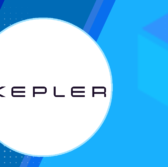Adopting artificial intelligence and machine learning tools “isn’t just beneficial,” but “imperative” for Department of Defense organizations, according to VivSoft Chief Architect Samuel Kim.
In a blog post published Monday, Kim noted that objectives laid out in the Executive Order on AI leadership and National Defense Strategy emphasize that “our technological edge is pivotal not just for keeping pace but for safeguarding national security.”
As the DOD progresses its efforts to deploy AI systems, it is important to ensure that “they are safe, reliable, and effective throughout their lifecycle.” Kim recommended the use of a shift-left trusted AI assurance approach, which “involves integrating crucial AI assurance processes early in the development cycle,” to address risks associated with these technologies.
Tools released in Chief Digital and Artificial Intelligence Office’s Responsible AI Toolkit, he said, can inform the implementation of a rigorous AI assurance framework.
The shift-left approach, he continued, is important for human-machine teaming – a strategy that pairs AI with a human-in-the-loop to enable “rapid and reliable response to dynamic operational environments.”
Using the shift-left method “embeds security and assurance at the earliest stages of software development, ensuring these systems are built with a foundation strong enough to support critical defense operations without fail.”
He highlighted VivSoft’s ENBUILD AI factory accelerator as a way the company is supporting the Defense Department’s work to adopt AI. The platform, he said, automates the shift-left approach so teams can “rapidly integrate, test, and evolve AI tools and algorithms within their existing frameworks” and ensure compliance.
It can help “categorize, templatize, and integrate AI/ML algorithms, tools, libraries, and training capabilities within an easy-to-navigate user interface” and offers a modular and scalable approach to AI implementation.
VivSoft is currently providing ENBUILD to the U.S. Air Force through a contract under the Platform One initiative, which intends to address enterprise-wide digital identity challenges.





